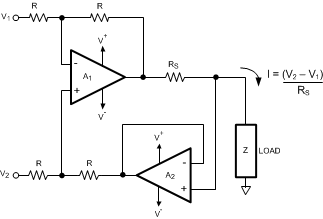-
LMP770x Precision, CMOS Input, RRIO, Wide Supply Range Amplifiers
- 1 Features
- 2 Applications
- 3 Description
- 4 Revision History
- 5 Description (continued)
- 6 Pin Configuration and Functions
- 7 Specifications
- 8 Detailed Description
- 9 Application and Implementation
- 10Power Supply Recommendations
- 11Layout
- 12Device and Documentation Support
- 13Mechanical, Packaging, and Orderable Information
- IMPORTANT NOTICE
Package Options
Mechanical Data (Package|Pins)
Thermal pad, mechanical data (Package|Pins)
Orderable Information
LMP770x Precision, CMOS Input, RRIO, Wide Supply Range Amplifiers
1 Features
- Unless Otherwise Noted,
Typical Values at VS = 5 V - Input Offset Voltage (LMP7701): ±200-µV (Maximum)
- Input Offset Voltage (LMP7702/LMP7704): ±220-µV (Maximum)
- Input Bias Current: ±200 fA
- Input Bias Current: ±200 fA
- Input Voltage Noise: 9 nV/√Hz
- CMRR: 130 dB
- Open-Loop Gain: 130 dB
- Temperature Range: −40°C to 125°C
- Unity-Gain Bandwidth: 2.5 MHz
- Supply Current (LMP7701): 715 µA
- Supply Current (LMP7702): 1.5 mA
- Supply Current (LMP7704): 2.9 mA
- Supply Voltage Range: 2.7 V to 12 V
- Rail-to-Rail Input and Output
2 Applications
- High Impedance Sensor Interface
- Battery-Powered Instrumentation
- High Gain Amplifiers
- DAC Buffer
- Instrumentation Amplifier
- Active Filters
3 Description
The LMP770x are single, dual, and quad low-offset voltage, rail-to-rail input and output precision amplifiers, each with a CMOS input stage and a wide supply voltage range. The LMP770x are part of the LMP™ precision amplifier family and are ideal for sensor interface and other instrumentation applications.
The specified low-offset voltage of less than ±200 µV, along with the specified low input bias current of less than ±1 pA, make the LMP7701 ideal for precision applications. The LMP770x are built using VIP50 technology, which allows the combination of a CMOS input stage and a 12-V common-mode and supply voltage range. This makes the LMP770x ideal for applications where conventional CMOS parts cannot operate under the desired voltage conditions.
Device Information(1)
| PART NUMBER | PACKAGE | BODY SIZE (NOM) |
|---|---|---|
| LMP7701 | SOT-23 (5) | 1.60 mm × 2.90 mm |
| SOIC (8) | 3.91 mm × 4.90 mm | |
| LMP7702 | VSSOP (8) | 3.00 mm × 3.00 mm |
| SOIC (8) | 3.91 mm × 4.90 mm | |
| LMP7704 | TSSOP (14) | 4.40 mm × 5.00 mm |
| SOIC (14) | 3.91 mm × 8.65 mm |
- For all available packages, see the orderable addendum at the end of the data sheet.
Typical Application Schematic

4 Revision History
Changes from H Revision (March 2013) to I Revision
- Added ESD Ratings table, Feature Description section, Device Functional Modes, Application and Implementation section, Power Supply Recommendations section, Layout section, Device and Documentation Support section, and Mechanical, Packaging, and Orderable Information section. Go
Changes from G Revision (March 2013) to H Revision
- Changed layout of National Data Sheet to TI formatGo